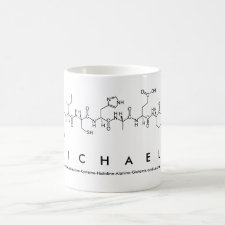
Authors: Karim K, Cowen T, Guerreiro A, Piletska E, Whitcombe MJ, Piletsky SA
Article Title: A Protocol for the Computational Design of High Affinity Molecularly Imprinted Polymer Synthetic Receptors.
Publication date: 2017
Journal: Global Journal of Biotechnology and Biomaterial Science
Volume: 3
Issue: (1)
Page numbers: 001-007.
Alternative URL: https://www.peertechz.com/articles/a-protocol-for-the-computational-design-of-high-affi-nity-molecularly-imprinted-polymer-synthetic-receptors.pdf
Abstract: Molecularly imprinted polymer (MIP) nanoparticles, commonly referred to as 'plastic antibodies' or synthetic receptors, are polymeric materials with strong affi nity and selectivity for a particular chemical target. MIPs are regularly produced for use in sensors for monitoring food quality and environmental pollutants, and in the design of robust and affordable replacements for biological receptors, enzymes and antibodies in drug testing and assays. More recently the easy production of MIP nanoparticles has also permitted research relating to possible in vivo applications, primarily in drug delivery systems, toxin sequestration and pathogen inhibition. The strength of the interaction between the target and the polymer binding site is dependent on the particular monomers selected in synthesis of the MIP, and the relative concentrations of these in the pre-polymerization mixture. While computational approaches have been used to aid in MIP design previously, the methods adopted are often slow and simplistic, centring on observations of the template structure with a couple of functional monomers presumed to be appropriate. We present here an automated method of rapidly screening numerous functional monomers and effectively determining appropriate monomer ratios, while accounting for spatial discrimination in selection and dynamic parameters in optimization. Example are then given of effect MIP synthesis resulting from the protocol, and the benefi ts of this approach over competing methods are discussed.
Template and target information: protocol, modelling, N-3-oxo-dodecanoyl-L-homoserine lactone, creatinine



Join the Society for Molecular Imprinting

New items RSS feed
Sign-up for e-mail updates:
Choose between receiving an occasional newsletter or more frequent e-mail alerts.
Click here to go to the sign-up page.
Is your name elemental or peptidic? Enter your name and find out by clicking either of the buttons below!
Other products you may like:
 MIPdatabase
MIPdatabase









